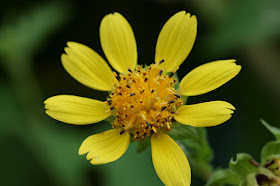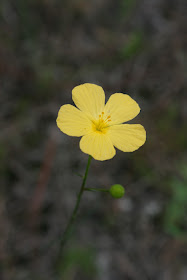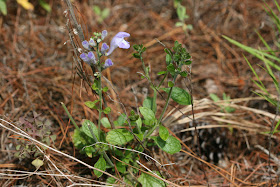This is NOT the sandspur in the grass family, though it does produce a spiny seed ball. Sandspur/Trailing ratany (Krameria lanceolata) is a member of the small Krameriaceae family, a family of 5 species mostly found in western states. Our species occurs in most of the interior peninsula counties in the northern half of Florida and a few of the Panhandle ones. It is also found in Georgia - but skips a few states west before once again becoming present from Arkansas through Arizona and north to Colorado and Kansas. It is not found north of this line, however.
Sandspur occurs in well-drained open habitats such as sandhills and open woodlands. It rarely stands taller than about 6 inches, but acts almost like a vine with long thin branches that can extend for 2 feet from the deep woody taproot. The leaves are thin as well, and covered by silky "hairs". Sandspur is a perennial that dies back to the ground in winter.
Flowering occurs in late spring and summer. The flowers have five showy rose-red sepals that could easily be mistaken for petals. They are produced in good numbers. The petals are small and tinged with green. The upper three petals are fused to form a hood. I do not have experience with this wildflower as a target for pollinators.
Though this species is quite attractive when in bloom, its growth habitat and its spiny seed pods do not make it a good choice for the typical home landscape. Likely, it will always be a species to admire while hiking in the spring/summer and to avoid in fall when the seed pods are ripe.




















